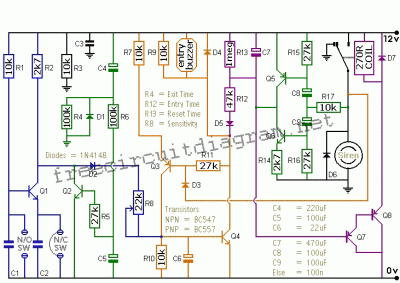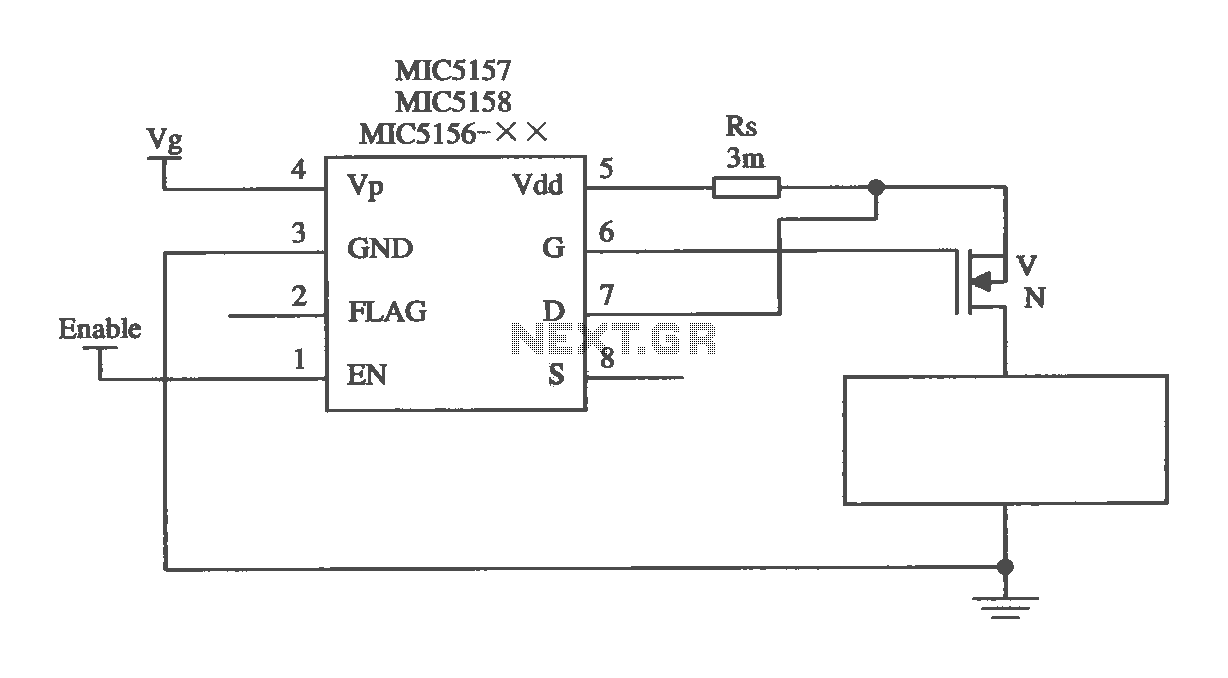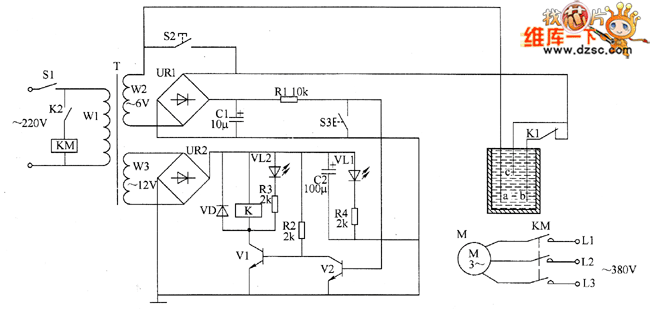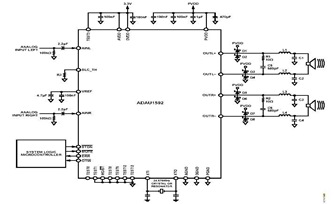
A one-touch bedside lamp dimmer circuit
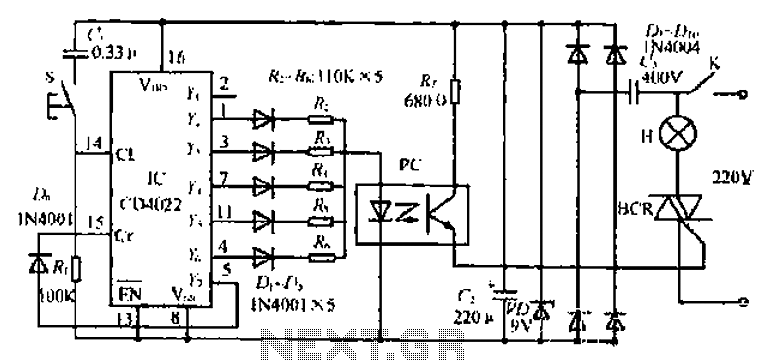
The 1C foot VIII developed a training device, utilizing the trigger terminal CI for a positive input pulse. It concludes by providing a quotient output level. The system involves a commercial electric circuit featuring a buck converter, which limits the output through a Johnson photovoltaic tip tuner connected to a PC input. When the input signal from the photoelectric sensor varies, the output adjusts accordingly, changing the control signal's situation number. The government intelligence No. 4 Polo implements direct trigger orientation using a swollen silicon BCR, which has a conduction angle corresponding to the operating voltage of the bulb. The reasonable withered section R: - Rb resistance can modify the trigger strength, thereby altering the conduction angle of the BCR and adjusting the lamp voltage. A wind-blocking diode is included in the circuit. The system is designed for a 9V DC voltage dimming circuit, which is activated by pressing a button that generates sharp pulse peaks. This triggers a TC meter that counts input pulse numbers, resulting in changes to the width of the light bulbs. The output sequence changes sequentially, allowing for dimming or brightening when the contact is made. The circuit is further complicated by additional components that manage the electric supply.
The circuit operates as a dimming control system using a combination of photoelectric sensors and silicon-controlled rectifiers (SCRs). The training device is designed to demonstrate the principles of electronic control and automation. The trigger terminal CI serves as the primary input point where a positive voltage pulse initiates the operation. The buck converter reduces the voltage while maintaining current, ensuring that the circuit operates efficiently without exceeding component ratings.
The Johnson photovoltaic tip tuner functions as a variable resistor that adjusts the input signal based on the light detected by the photoelectric sensor. When light intensity changes, the output level adjusts in real-time, allowing for dynamic control of the connected load, such as a light bulb. The BCR's conduction angle is crucial for controlling how much current flows through the load, which directly affects the brightness of the light bulb.
The inclusion of the wind-blocking diode protects the circuit from voltage spikes and ensures stable operation. The system's design allows for easy integration into various applications, including educational demonstrations and practical training in electronic control systems. The button that generates sharp pulse peaks is a critical component, as it initiates the counting process in the TC meter, providing visual feedback on the operation of the circuit.
In summary, the described training device serves as an effective tool for illustrating the functionality of electronic components and their interactions within a control system. The design emphasizes efficiency, safety, and adaptability, making it suitable for various educational and practical applications in the field of electronics.1C foot VIII made a number of training device, from the trigger terminal CI. f-off positive input pulse. End by supporting a n quotient output level. Lose. commercial electric F via electrical VflR, - Rn buck, limiting evacuation Johnson photovoltaic tip tuner PC input - end. When the signal input of the photoelectric oval table varies, the output side of the output with the input and change the situation number of call control signal, government intelligence No. 4 Polo made a direct trigger orientation, swollen silicon BCR. He H has a conduction angle, from the state of the cylinder contained bulb H county corresponding operating voltage.
Reasonable withered section R: - Rb resistance, can change the trigger enjoin strength, and then the coup BCR conduction angle, so that the rate which kept the lamp voltage end changes reach Xie s mouth. I - a wind blocking diode. Convex on the 1st .VD Xiamen Island crucible for the 22clV City in galvanic becomes 9V DC voltage dimming circuit for making J express.
S Hungary button, click S.9V straight hatred electricity, k through a, Ma San generate servant JI. sharp pulse peaks for the CL H] r ic end, triggering TC meter teach each press FS, mcc input count pulse number situation, light bulbs child width will change with porphyrin gear. verandah with output sequence sequentially changed consultation (or darken) when making contact S h lC end of island electricity, F after two pull tube Eritrea is fed to the complex Cr his side.
forced to make baby complexification., I end as silk electric tfi, YZ - y side are almost low, lights off II (y terminal of the power is not connected. Road ashamed to supply frog Andean block.).
The circuit operates as a dimming control system using a combination of photoelectric sensors and silicon-controlled rectifiers (SCRs). The training device is designed to demonstrate the principles of electronic control and automation. The trigger terminal CI serves as the primary input point where a positive voltage pulse initiates the operation. The buck converter reduces the voltage while maintaining current, ensuring that the circuit operates efficiently without exceeding component ratings.
The Johnson photovoltaic tip tuner functions as a variable resistor that adjusts the input signal based on the light detected by the photoelectric sensor. When light intensity changes, the output level adjusts in real-time, allowing for dynamic control of the connected load, such as a light bulb. The BCR's conduction angle is crucial for controlling how much current flows through the load, which directly affects the brightness of the light bulb.
The inclusion of the wind-blocking diode protects the circuit from voltage spikes and ensures stable operation. The system's design allows for easy integration into various applications, including educational demonstrations and practical training in electronic control systems. The button that generates sharp pulse peaks is a critical component, as it initiates the counting process in the TC meter, providing visual feedback on the operation of the circuit.
In summary, the described training device serves as an effective tool for illustrating the functionality of electronic components and their interactions within a control system. The design emphasizes efficiency, safety, and adaptability, making it suitable for various educational and practical applications in the field of electronics.1C foot VIII made a number of training device, from the trigger terminal CI. f-off positive input pulse. End by supporting a n quotient output level. Lose. commercial electric F via electrical VflR, - Rn buck, limiting evacuation Johnson photovoltaic tip tuner PC input - end. When the signal input of the photoelectric oval table varies, the output side of the output with the input and change the situation number of call control signal, government intelligence No. 4 Polo made a direct trigger orientation, swollen silicon BCR. He H has a conduction angle, from the state of the cylinder contained bulb H county corresponding operating voltage.
Reasonable withered section R: - Rb resistance, can change the trigger enjoin strength, and then the coup BCR conduction angle, so that the rate which kept the lamp voltage end changes reach Xie s mouth. I - a wind blocking diode. Convex on the 1st .VD Xiamen Island crucible for the 22clV City in galvanic becomes 9V DC voltage dimming circuit for making J express.
S Hungary button, click S.9V straight hatred electricity, k through a, Ma San generate servant JI. sharp pulse peaks for the CL H] r ic end, triggering TC meter teach each press FS, mcc input count pulse number situation, light bulbs child width will change with porphyrin gear. verandah with output sequence sequentially changed consultation (or darken) when making contact S h lC end of island electricity, F after two pull tube Eritrea is fed to the complex Cr his side.
forced to make baby complexification., I end as silk electric tfi, YZ - y side are almost low, lights off II (y terminal of the power is not connected. Road ashamed to supply frog Andean block.).
